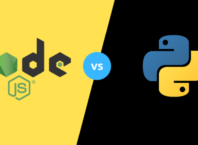When it comes to the world of Information Technology, the last few years have witnessed countless developments, trends and hypes. For businesses, digital transformation is crucial for growth and competitive advantage as customers expect seamless digital experiences.
This new trend (digital transformation) is used to eliminate the need for manual activity and helps present the best customer experience possible.
This is where Identity and Access Management or IAM comes to play. Where classic IAM mainly addresses employees and business customers, Customer-IAM (or: CIAM) is the future of digital customer experiences.
Thierry LeVasseur, internet security expert, says many organizations are turning to identity management software, which can systemize user access controls securely and in a well-organized way.
In fact, Thierry LeVasseur says identity management practices, (IAM and CIAM), are becoming the norm for many companies and is highly relevant for all customer-facing teams.
Presently, at least 74% of all enterprise breaches begin with stolen or weak privileged credentials. With illicitly gained credentials, hackers can disrupt a business, stealing proprietary data or financial resources, or exploit a network’s processing power undetected.
To explain the most basic understanding of both solutions, IAM is internally-facing while CIAM is externally-oriented.
IAM focuses on authenticating and monitoring employees within an organization, making sure the network has strong authentication policies and employees only have the credentials they need to perform their specific job duties.
Similarly, a strong CIAM provider will help businesses set up a secure system that ensures customer data is safe from cyberthreats. For example, CIAM can establish a multi-factor authentication which prompts users for more information, such as fingerprints or voice recognition to gain access.
The issue of security is one of the top reasons businesses turn to IAM and CIAM, however, these identity management practices can also help businesses streamline their customer’s user experience.
For example, CIAM providers can help to create an extensive profile for each user in the company’s system, which tracks and manages logins and devices along with purchase histories. In addition, if the website requires a social login, this profile will also add in specific interests from the social providers the customer chose for authentication.
This can help to tailor content per user interest, matching articles or advertisements to specific likes, interests, and histories to give them a more personalized experience.
In order to implement identity management efficiently, companies first need to review their own user cases in order to find the best fit for their needs.












